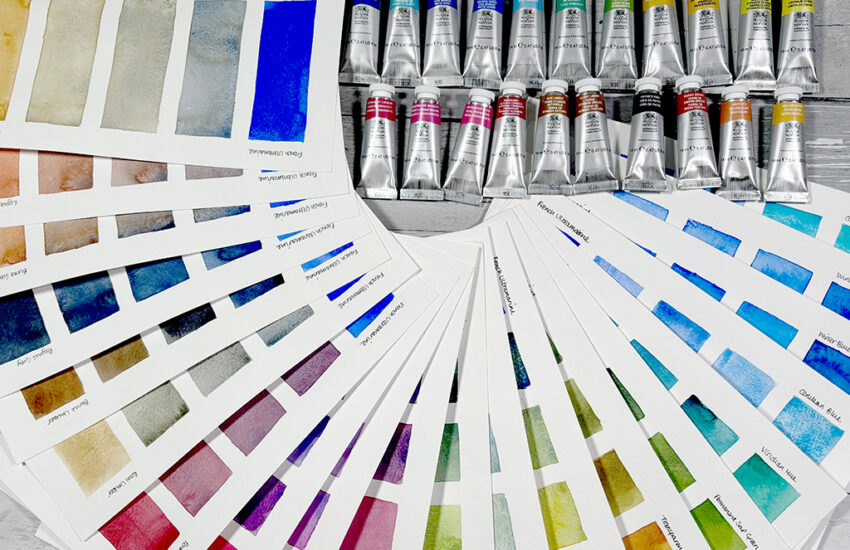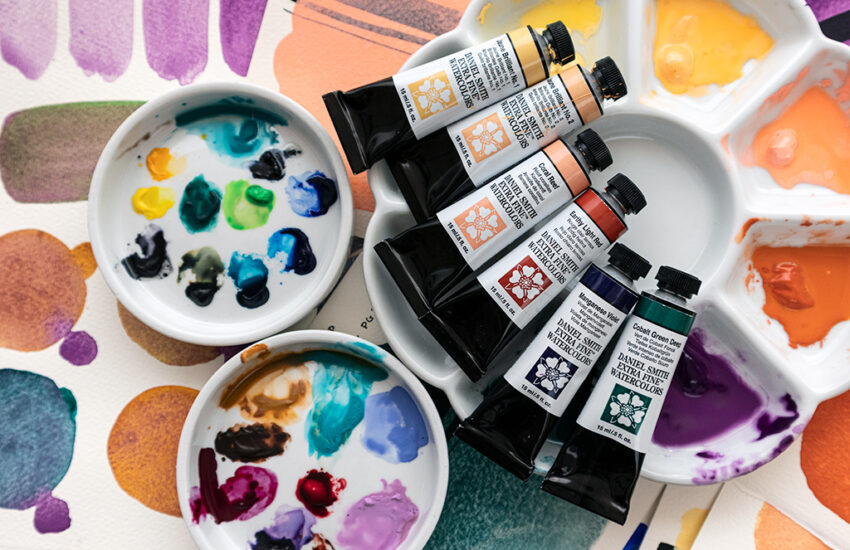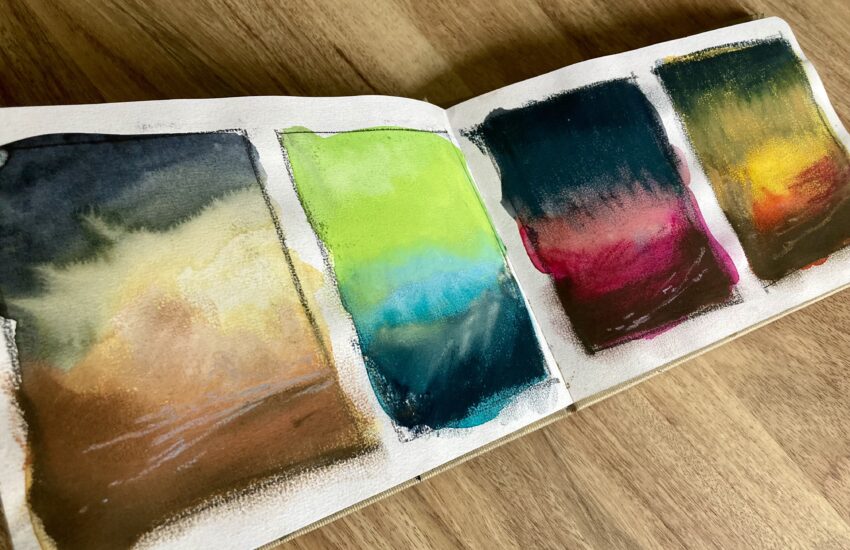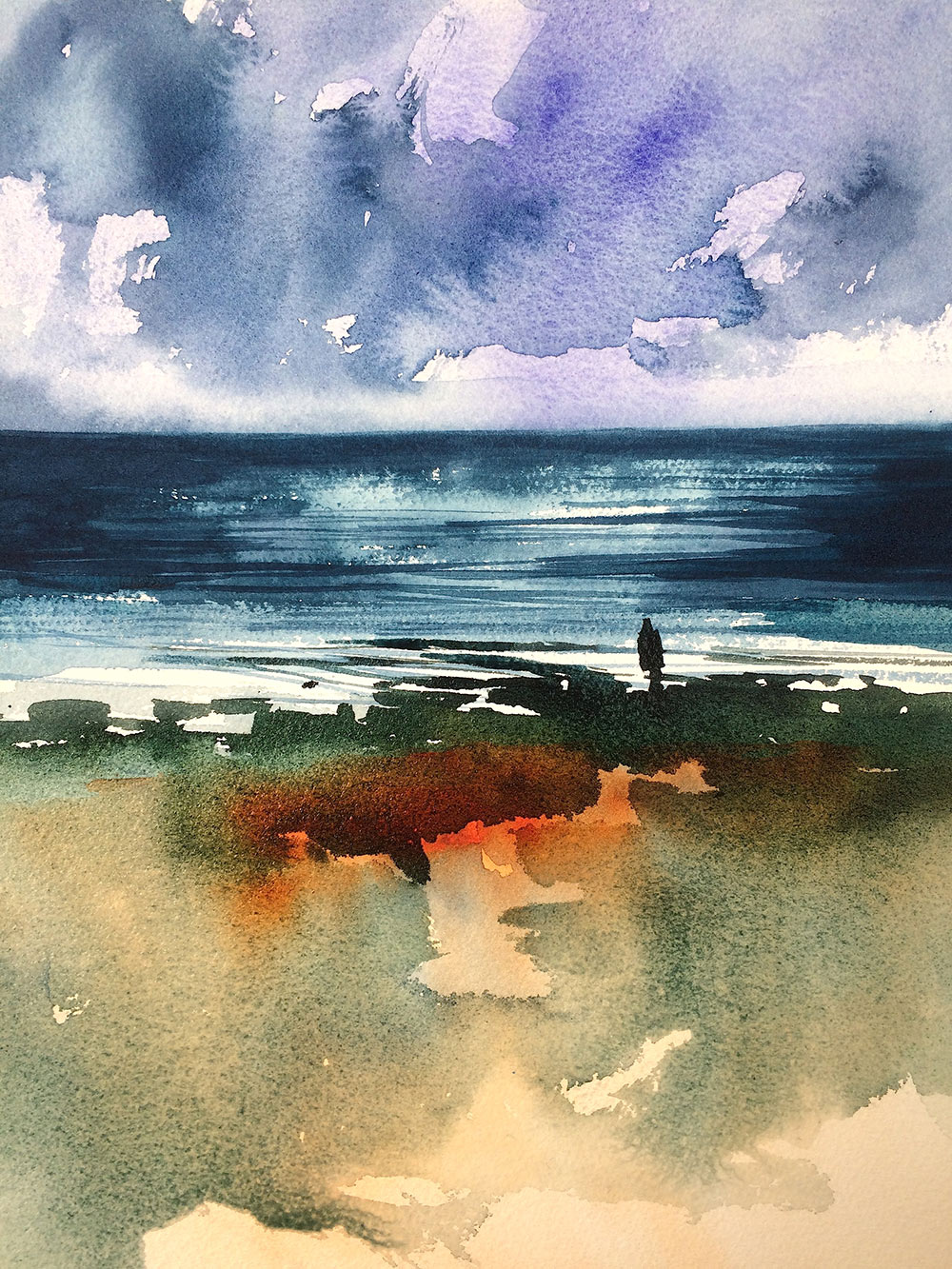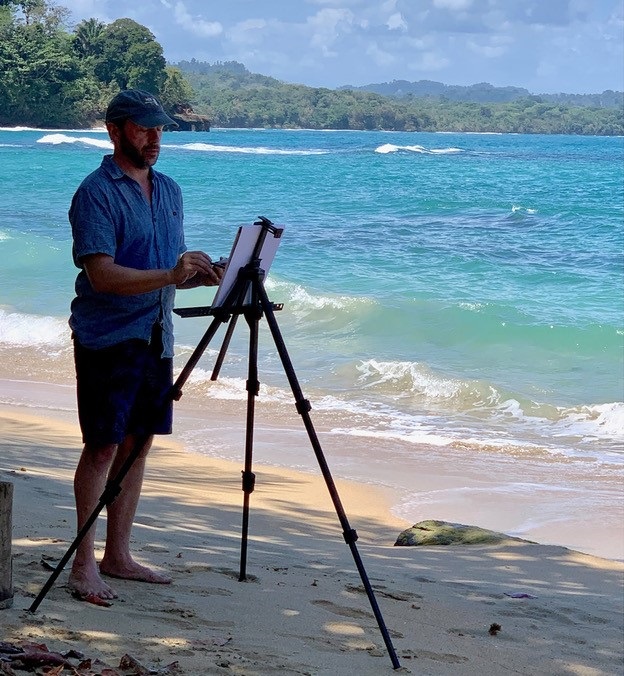Exploring the Versatility of Daniel Smith Watercolour Sticks
Daniel Smith Watercolour Sticks offer an exciting and dynamic way to work with watercolours. Ideal for quick location sketches and with the versatility to create more refined studio pieces. In this blog, I will share my techniques and experiences using these unique sticks to create vibrant, textured paintings. From capturing the sparkle of water to layering rich monochrome effects, I will demonstrate how these sticks can enhance both detail and atmosphere in your artwork. Read on for insights, tips, and creative approaches to making the most of this versatile medium.
Practical Tips for Using Watercolour Sticks
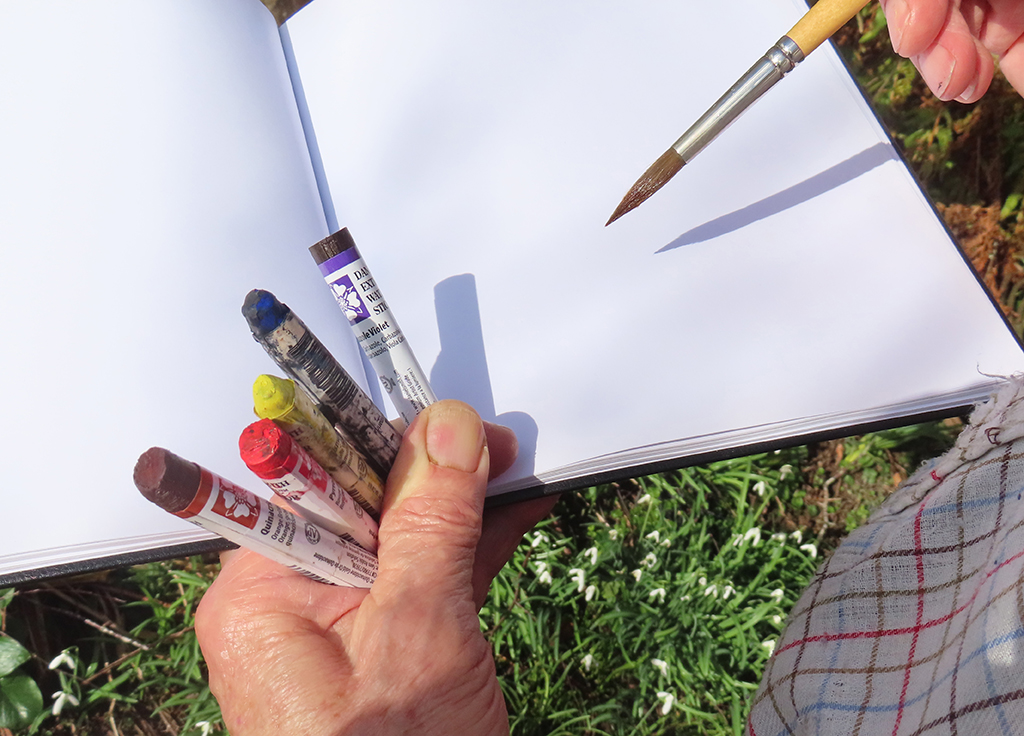
Daniel Smith Watercolour Sticks are an extremely effective way of working, whether you wish to use them for rapid colour sketches, or more considered studio work. They are easily used by holding them in one hand, but things can get a little messy. I suggest either wearing thin plastic gloves or keeping a pack of Wet Wipes handy. Experimenting with different application methods—such as direct rubbing, brush pickup, and layering—can help unlock their full creative potential. Give them a try – often a new approach to working can reap great benefits for your work.
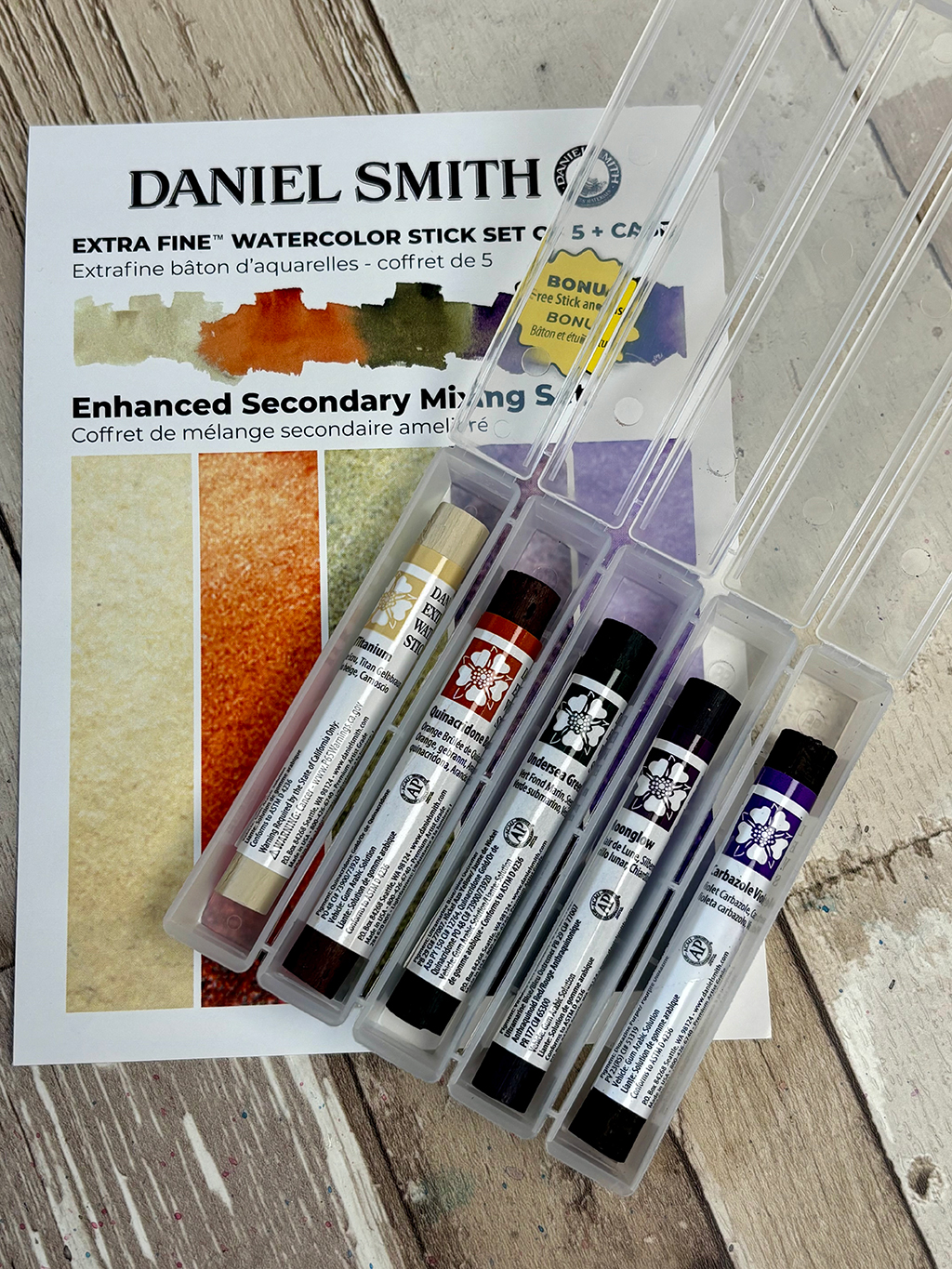
In this article I have used a range of colours including the Enhanced Secondary Mixing Set which contains; Buff Titanium, Quinacridone Burnt Orange, Undersea Green, Moonglow and Carbazole Violet. Sets include a handy plastic carry case ideal for when I create sketches out on location. The watercolour sticks can also be bought individually from a range of 62 colours.
Bringing Sparkle and Depth to Water Scenes
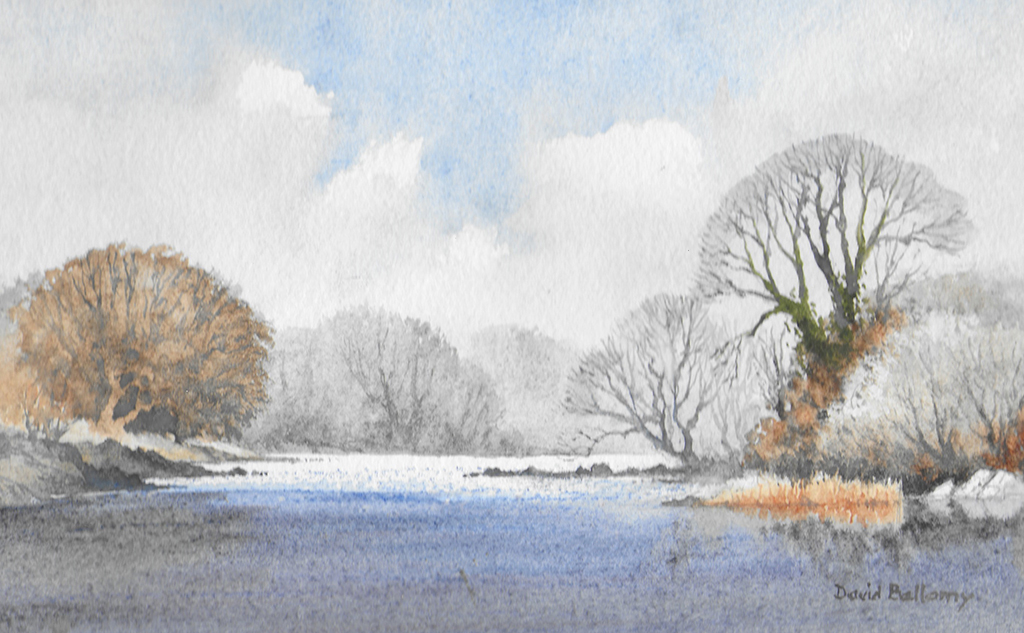
Sparkling Water on the Wye was painted in the studio. I picked up the colour directly from the stick with a number 10 round brush for most of the painting. I worked with a very fluid wash for the French Ultramarine sky, the clouds were left as white paper. For the sparkling water I dragged the damp stick of French Ultramarine horizontally across the paper. The NOT/cold press surface worked well in suggesting the sparkle, and this is a great feature of the watercolour sticks.
I then brought in a wash of French Ultramarine mixed with some Moonglow, an attractive plum colour, into the lower part of the river. This was achieved by wetting the area first with clean water, then picking up colour directly off the sticks, mixing it on a palette before applying the wash. I sometimes stroke a dry watercolour stick across the paper, often mixing two colours in doing so. Then I apply copious water, but often this can leave a few stroke-marks on the paper. This is fine if I want some texture or simply doing a rapid sketch but in this studio piece I wanted a smooth wash.
The fine detail on the trees was created by picking colour off the sticks with a number 1 rigger brush. I mainly used a mixture of French Ultramarine and Hematite Genuine. For the right-hand small trees I laid a wash of Buff Titanium, with some more of the French Ultramarine and Hematite Genuine lower down in the same manner as above. I softened it into the Buff Titanium, but created a hard edge to define the rocks below. The reeds were rendered with Yellow Ochre and touches of Quinacridone Burnt Orange.
Creating Atmospheric Landscapes with Monochrome Effects
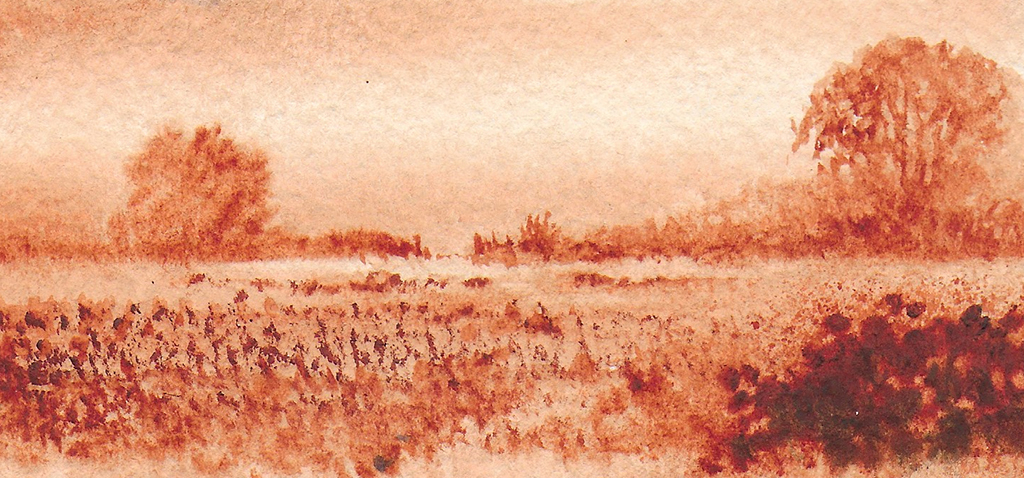
Morning Mist is a small sketch on Saunders Waterford rough paper which shows several interesting techniques you can adopt with these amazing sticks. Firstly a wash of clear water was laid over the whole paper, and then with Quinacridone Burnt Orange the sky was painted. A lighter horizontal band was left across the centre and the wash was then brought down over the field. I then immediately picked up the same colour directly off the stick with a number 6 round brush. I worked it into the left-hand tree and middle-distant hedgerow wet-into-wet. The right-hand tree was also painted in, the trunk and sharper foliage details were added when it was almost dry.
Retaining the monochrome effect, I then dragged the stick of damp Quinacridone Burnt Orange horizontally across the foreground. The rough surface created an interesting textural pattern suggesting rough ground. Employing a darker tone over an initial wash of the same colour in this way is a useful technique. It takes advantage of the special attributes of watercolour sticks – usually more difficult to achieve with normal watercolour methods. Finally the bottom right-hand corner was dampened and the stick rubbed onto the paper to create a dark bush. Here I added some Hematite Genuine to darken it. This shows how the intensity of the sticks can work to your advantage.
Enhancing Detail with Mixed Media Techniques
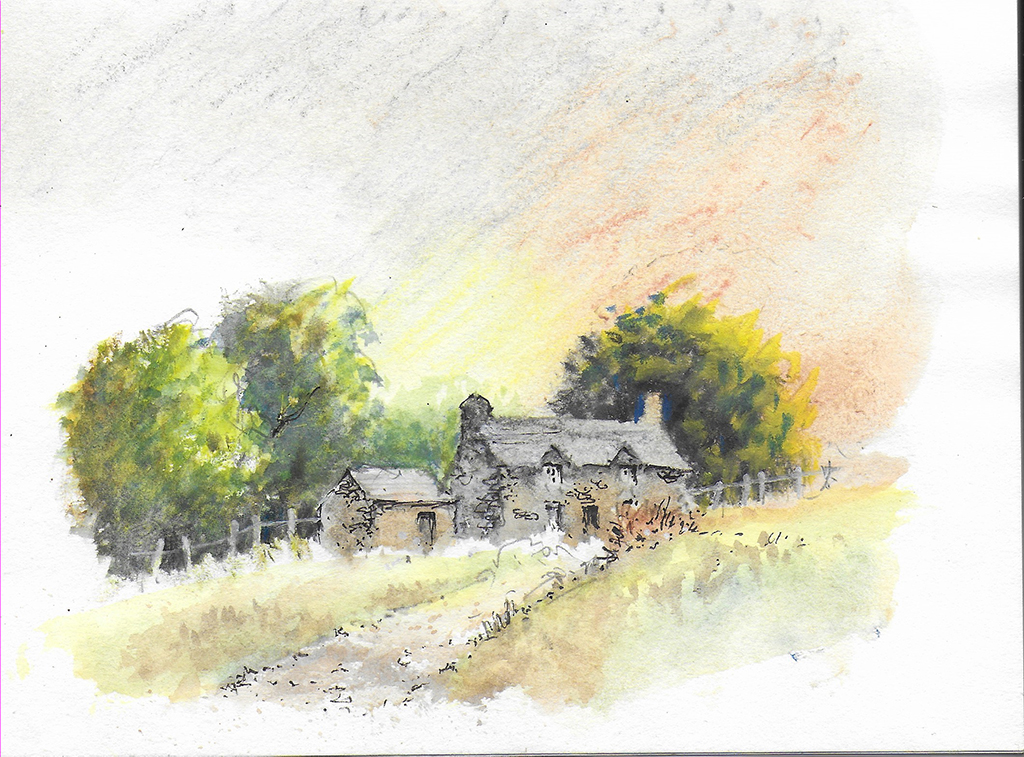
Cottage at Brithdir is an original sketch where I have added some stonework detail with a black pen and also the fence with a white pen. The intensely dark foliage behind the right-hand end of the cottage was achieved by rubbing a Lunar Black stick into a damp area. I masked out the roof and chimney with a piece of thin card to create a sharp edge.
If you would like more information about Daniel Smith Watercolour Sticks you might find this article interesting and my interview with Bromleys on the publication of my book Arabian Light.
If you’d like to check out my blogs on watercolour painting you can access them via my website www.davidbellamy.co.uk



